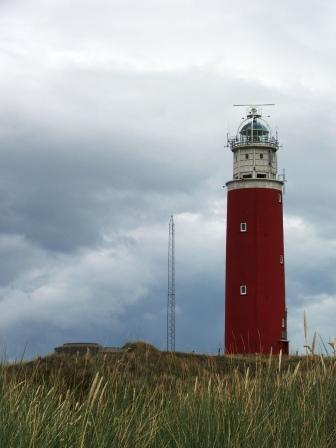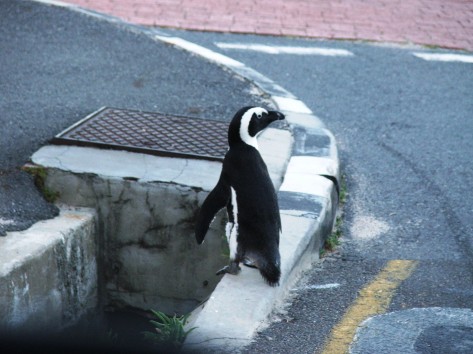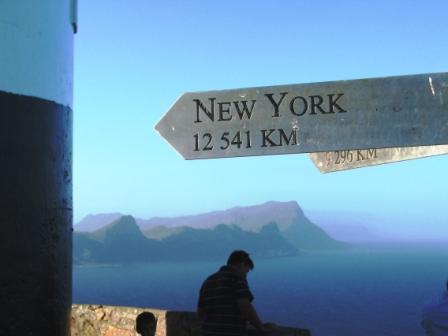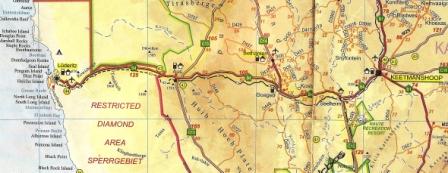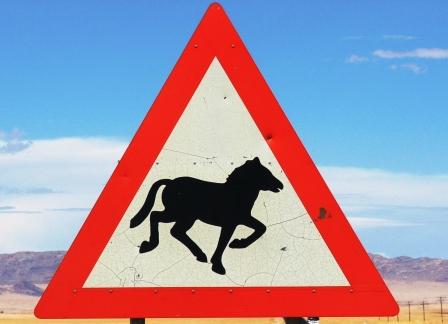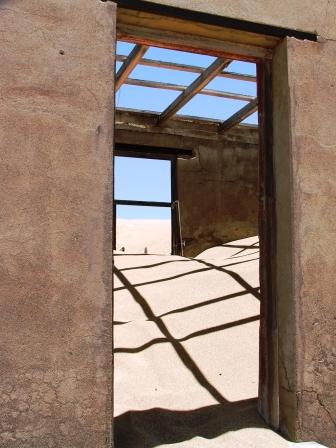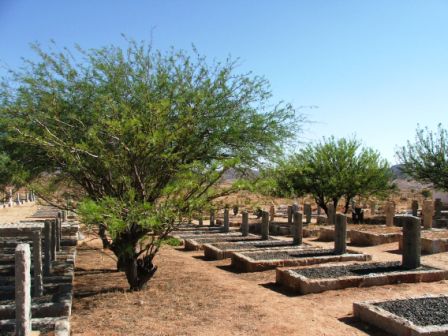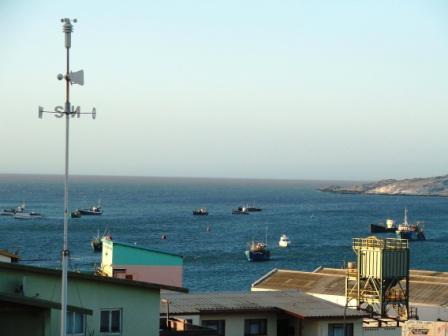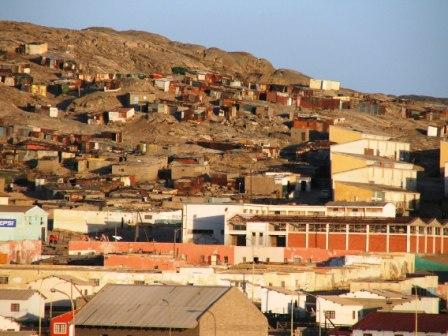I was desperate to try a bit of surfing in Cape Town. Naturally, there are loads of places trying to sell you package tours, but we simply jumped in our bakkie and headed south towards the Cape of Good Hope.
South of Cape Town is a peninsula made up primarily of two national parks (Table Mountain National Park and Cape of Good Hope Nature Reserve) and a chain of resort towns on the eastern coast. We pulled into Muizenberg, a town on False Bay known for its surf schools. After parking and dutifully paying the guard to watch our vehicle, I walked into one of the surf schools to suss things out.
The shop was bustling with activity. There were at least two groups suiting up and another group peeling off their wet suits and hitting the showers. Loads of rental boards were stacked up against the walls. A row of wet suits stood stiffly at attention on their hangars next to me. I asked if I could jump in on one of the lessons.
“I dunno,” the little surfer girl behind the register wondered. “They’re kind of young kids in both groups? Let’s see if I can sort you out.” And off she went out of the shop.
After a minute, she walked back in the shop with a guy I’d seen sleeping on his board in front of the surf shop.
“This is Jonno,” the girl indicated. “He’ll be your instructor for the next 90 minutes.”
Jonno rubbed the sleep out of his eyes and then offered his hand. He was the typical “surfer dude” right down to the sun-bleached, unkempt hair, and shark tooth necklace. He had his wet suit half peeled off, and I guess we’d interrupted his attempt to remedy his wet suit tan.
“How’s it, broo,” he muttered. “We gotta wait a while, yeah?”
“Sure,” I replied. “But why?”
“There’s a great white shark in the water? Shouldn’t be long though? Maybe 20 minutes, yeah?”
I’m not sure if it was a surfer thing, or an Afrikaner thing, but everything he said came out as a question.
“Oookay. How do you know there’s a shark in the water?”
“Just watch the flagpole, yeah? When the big white flag with the big shark on it comes down, it’s safe, yeah?”

above: a white flag keeps swimmers and surfers out of the waters of False Bay in Muizenberg
“Gotcha,” I replied, plunking down my 150 Rand. “See you in 20.”
We walked outside.
“You want to come surfing too?” I asked my wife.
“With a shark in the water? Are you nuts?”
“You don’t have to swim faster than the shark, only faster than one or two other kids in the water,” I argued.
“No thanks. I prefer to stay at the top of the food chain.”
“But we’re still near the top out there. Just not at the top.”
She was already walking off. “I’ll see you back here in two hours.”
Muizenberg’s boardwalk had a respectable number of cafés and restaurants, so I didn’t have to worry about her.
The Cape Town area is well known for its great white shark population and for some spectacular shark attacks. The Saffers have a pretty elaborate shark detection system made up of aircraft, look-out towers, and the flag system to warn swimmers and surfers.
“The sharks love the seals, yeah?” Jonno explained. “Seal island is just offshore, which is why they cruise by here as well looking for a meal.”
“Have you ever seen a shark?” I asked.
“Ya ya. Plenty. Not too close, though, yeah? My dad’s board got bumped once though. Bumped once, and then it took out another surf board right next to him.”
“Close call.”
“Ya ya.”
The Afrikaner accent is so cool.
Summer holidays had just begun, and the beaches were packed. (In fact that very day, standard testing grades were released for South African high school students (“matrics”) across the nation. How one did on this testing determined one’s future. Amazingly, those who test highest are honored on the front page, and even more incredible, those who did crappy were shamed – their names also appeared in the papers with their miserable test scores!) It looked like everyone had come to Muizenberg to blow off steam – no matter what their results had been.
We found a little patch of sand to call our own so I could get some instruction on how to stand up on the board once in the water. After 10 minutes or so, the white flag with the shark profile on it came down and was replaced by a red one.
“What does a red flag mean?”
“It means that there was a shark in the water, but he’s not around here now.”
“Oookay.”
“But it safe now, yeah?”
We hit the water…
To say the water was cold is an understatement. It was freezing. A few people were simply taking brief dips in swimming trunks, but anyone on a board was in a wet suit. The water was choppy, but with very few pronounced waves worth riding.
“There’s on off-shore breeze, yeah? That’s why the water is so sloppy?”
“Wind coming from land makes for better waves?”
“Ya ya. There’s an excellent on-shore breeze on the Atlantic side of the peninsula right now. Eight-foot waves, mate. Imagine that, yeah?” His eyes became dreamy.
Despite the sloppy waves, I did get up on the deck after one attempt. (Years of snowboarding helps.) I got up a few more times after that, but I was really plodding through the water. We waited, in hopes that conditions would improve, and killed time talking about music. He was impressed when I told I’d seen Rage Against the Machine when their first album came out.
“When was that?” He marveled.
“Must have been around 1993,” I re[;ied.
“Whoah.”
He gave me God-like status when I told him I’d seen Metallica with Guns ‘n Roses and Faith No More in a stadium gig.
“Whoah. When was that?”
“Must have been ’91? 1992?”
“Whoah. I didn’t now Metallica was so old, yeah?”
I blinked in surprise. Old? Well, that was 15 years ago I suppose, but still.
Then I realized he was giving me that look. It was that look I used to give guys who’d seen Led Zeppelin live. It was a type of admiration, but kind of mixed with a “way to go, old dude” mentality.
Damn.
Conditions in the water only got worse. We were getting drubbed by small waves, none of which were worth riding. The red flag came down, replaced now by a black one.
“What does that one mean?”
“That means that they can’t see anything, yeah? There’s a lot of sand in the water? Decreases visibility.”
“So, is that bad?” I struggled.
“No. S’alright, yeah? See that over there?” He pointed out to sea. Through the waves, I saw a few shaped bobbing in the water. “Any shark out here will go after the seals before they come after us, yeah?”
I tried my best to catch a few more waves before I ran out of gas. 90 minutes of up-and-down on the deck and I was beat.
We walked past the red flag back to the surf shop.
I shook hands with Jonno before parting. “You should come back, yeah? Now that I got my test results, I’m here every day. Should be better conditions tomorrow. And Metallica’s coming here soon, yeah? Keep an eye out for that.”
